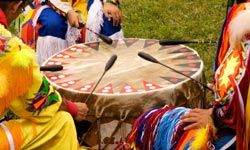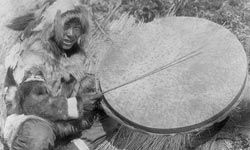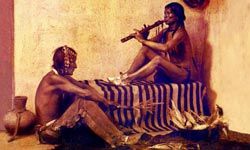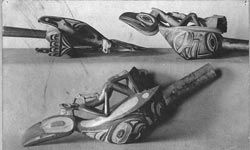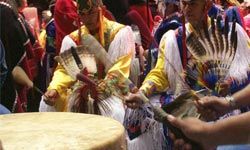Music is very important in the lives of Native Americans. It's used for the oral transmission of their history and culture, plus educational, medicinal and celebratory purposes. While Native American tribes all use the same main instruments -- drums, flutes, rattles and whistles -- the construction and sounds of their instruments vary, as sometimes does the purpose of the instrument.
Singing is popular in Native American cultures and is integral to the storytelling purpose of many Native American songs; it also helps preserve Native American languages.
Advertisement
Read on to learn about 10 Native American music traditions, from the purpose of specific instruments to the types of music and ceremonies developed over the ages.
